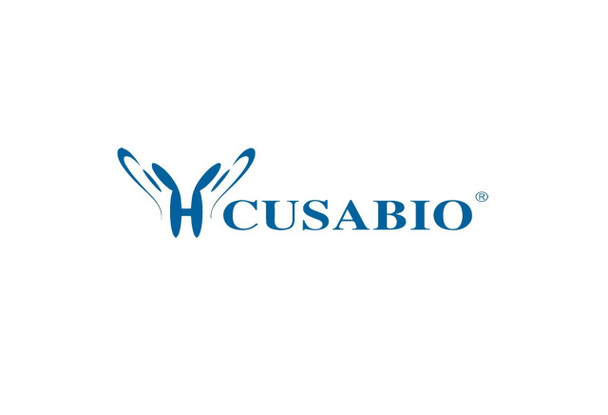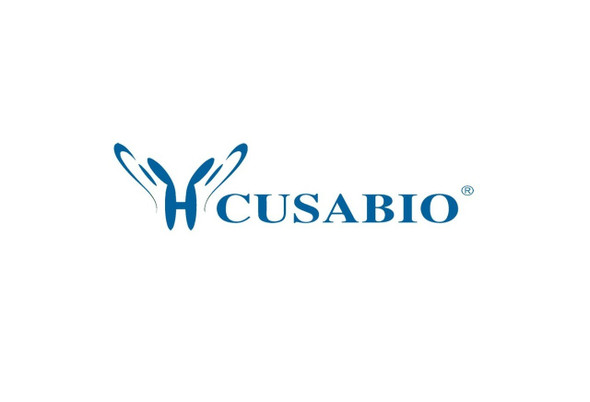Cusabio Human Recombinants
Recombinant Human Endonuclease 8-like 1 (NEIL1) | CSB-EP846619HU
- SKU:
- CSB-EP846619HU
- Availability:
- 13 - 23 Working Days
Description
Recombinant Human Endonuclease 8-like 1 (NEIL1) | CSB-EP846619HU | Cusabio
Alternative Name(s): DNA glycosylase/AP lyase Neil1DNA-(apurinic or apyrimidinic site) lyase Neil1Endonuclease VIII-like 1FPG1Nei homolog 1 ;NEH1Nei-like protein 1
Gene Names: NEIL1
Research Areas: Epigenetics and Nuclear Signaling
Organism: Homo sapiens (Human)
AA Sequence: PEGPELHLASQFVNEACRALVFGGCVEKSSVSRNPEVPFESSAYRISASARGKELRLILSPLPGAQPQQEPLALVFRFGMSGSFQLVPREELPRHAHLRFYTAPPGPRLALCFVDIRRFGRWDLGGKWQPGRGPCVLQEYQQFRENVLRNLADKAFDRPICEALLDQRFFNGIGNYLRAEILYRLKIPPFEKARSVLEALQQHRPSPELTLSQKIRTKLQNPDLLELCHSVPKEVVQLGGKGYGSESGEEDFAAFRAWLRCYGMPGMSSLQDRHGRTIWFQGDPGPLAPKGRKSRKKKSKATQLSPEDRVEDALPPSKAPSRTRRAKRDLPKRTATQRPEGTSLQQDPEAPTVPKKGRRKGRQAASGHCRPRKVKADIPSLEPEGTSAS
Source: E.coli
Tag Info: N-terminal 6xHis-SUMO-tagged
Expression Region: 2-390aa
Sequence Info: Full Length of Mature Protein
MW: 59.6 kDa
Purity: Greater than 90% as determined by SDS-PAGE.
Relevance: Involved in base excision repair of DNA damaged by oxidation or by mutagenic agents. Acts as DNA glycosylase that recognizes and roves damaged bases. Has a preference for oxidized pyrimidines, such as thymine glycol, formamidopyrimidine (Fapy) and 5-hydroxyuracil. Has marginal activity towards 8-oxoguanine. Has AP (apurinic/apyrimidinic) lyase activity and introduces nicks in the DNA strand. Cleaves the DNA backbone by beta-delta elimination to generate a single-strand break at the site of the roved base with both 3'- and 5'-phosphates. Has DNA glycosylase/lyase activity towards mismatched uracil and thymine, in particular in U:C and T:C mismatches. Specifically binds 5-hydroxymethylcytosine (5hmC), suggesting that it acts as a specific reader of 5hmC.
Reference: NIEHS SNPs programAnalysis of the DNA sequence and duplication history of human chromosome 15.Zody M.C., Garber M., Sharpe T., Young S.K., Rowen L., O'Neill K., Whittaker C.A., Kamal M., Chang J.L., Cuomo C.A., Dewar K., FitzGerald M.G., Kodira C.D., Madan A., Qin S., Yang X., Abbasi N., Abouelleil A. , Arachchi H.M., Baradarani L., Birditt B., Bloom S., Bloom T., Borowsky M.L., Burke J., Butler J., Cook A., DeArellano K., DeCaprio D., Dorris L. III, Dors M., Eichler E.E., Engels R., Fahey J., Fleetwood P., Friedman C., Gearin G., Hall J.L., Hensley G., Johnson E., Jones C., Kamat A., Kaur A., Locke D.P., Madan A., Munson G., Jaffe D.B., Lui A., Macdonald P., Mauceli E., Naylor J.W., Nesbitt R., Nicol R., O'Leary S.B., Ratcliffe A., Rounsley S., She X., Sneddon K.M.B., Stewart S., Sougnez C., Stone S.M., Topham K., Vincent D., Wang S., Zimmer A.R., Birren B.W., Hood L., Lander E.S., Nusbaum C.Nature 440:671-675(2006)
Storage: The shelf life is related to many factors, storage state, buffer ingredients, storage temperature and the stability of the protein itself. Generally, the shelf life of liquid form is 6 months at -20?/-80?. The shelf life of lyophilized form is 12 months at -20?/-80?.
Notes: Repeated freezing and thawing is not recommended. Store working aliquots at 4? for up to one week.
Function: Involved in base excision repair of DNA damaged by oxidation or by mutagenic agents. Acts as DNA glycosylase that recognizes and removes damaged bases. Has a preference for oxidized pyrimidines, such as thymine glycol, formamidopyrimidine (Fapy) and 5-hydroxyuracil. Has marginal activity towards 8-oxoguanine. Has AP (apurinic/apyrimidinic) lyase activity and introduces nicks in the DNA strand. Cleaves the DNA backbone by beta-delta elimination to generate a single-strand break at the site of the removed base with both 3'- and 5'-phosphates. Has DNA glycosylase/lyase activity towards mismatched uracil and thymine, in particular in U
Involvement in disease:
Subcellular Location: Cytoplasm, cytoskeleton, microtubule organizing center, centrosome, Nucleus, Chromosome
Protein Families: FPG family
Tissue Specificity: Ubiquitous.
Paythway: DNArepairpathway
Form: Liquid or Lyophilized powder
Buffer: If the delivery form is liquid, the default storage buffer is Tris/PBS-based buffer, 5%-50% glycerol. If the delivery form is lyophilized powder, the buffer before lyophilization is Tris/PBS-based buffer, 6% Trehalose, pH 8.0.
Reconstitution: We recommend that this vial be briefly centrifuged prior to opening to bring the contents to the bottom. Please reconstitute protein in deionized sterile water to a concentration of 0.1-1.0 mg/mL.We recommend to add 5-50% of glycerol (final concentration) and aliquot for long-term storage at -20?/-80?. Our default final concentration of glycerol is 50%. Customers could use it as reference.
Uniprot ID: Q96FI4
HGNC Database Link: HGNC
UniGene Database Link: UniGene
KEGG Database Link: KEGG
STRING Database Link: STRING
OMIM Database Link: OMIM










